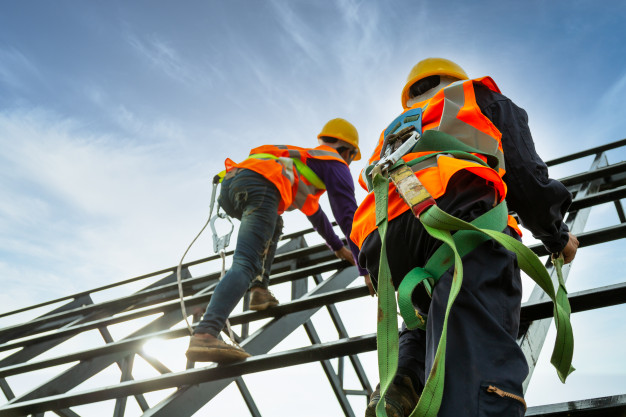Scaffolding is an essential part of most construction projects. It protects those working at a height and provides access to otherwise hard to reach areas. However, the installation of scaffolding should be approached with the utmost care and safety. The scaffolding must be stable, correctly installed and of good quality to avoid any problems.
Working at a height can be dangerous, and some accidents are much more common than others. Roof work is risky, and fragile roof lights are one of the leading causes of workplace deaths. Construction workers should be briefed on safety procedures surrounding the site and specialist equipment to minimise the risk of injury. Workers should proceed with caution around non-reinforced fibre cement sheets, corroded metal sheets, glass, rotten chipboard and much more.
When working at a height, construction workers also need to identify risk factors and unsafe working conditions. Weather conditions can impact safety procedures and prevent workers from carrying out their job. Check the location of your work and make sure it is safe to operate on today. For example, bricks may have shifted if there have been strong winds, and materials may have fallen from the roof. Always know your emergency procedures in case things take a nosedive, and you need to act quickly.
In the UK, The Work at Height Regulations (2005) outline how to prevent death and injury caused by working at a height. Your employer should be aware of these regulations and must ensure your construction site is planned, supervised and covered by competent workers.
The type of scaffolding used depends on the construction site and the nature of the work there. Scaffolding is a temporary framework that supports the original building and can range from frame systems to multi-level systems. There is also ledger scaffolding, referring to a horizontal brace, and transoms that use a horizontal cross-section load-bearing component to hold the working deck.
Construction projects need a PPE supplier to provide good-quality protective equipment. A harness may be needed if the worker is at the height of six feet or higher. A harness can protect workers against slips and trips from a height. Non-slip boots are also great for roof work, particularly high-quality ones. Opt for steel-capped toe boots to protect your feet from sharp falling objects.
Gloves are a necessity on construction sites and can be good for mounting scaffolding or carrying equipment. A good pair of gloves can stop you from getting blisters and deep cuts in your hands. They can also help you better grip items to stop you from dropping them and damaging the materials.
Finally, a helmet should be worn by everyone on the site at all times. Even a falling paintbrush can cause a lot of damage to an individual if it’s dropped from a height. Prepare for all injuries with protective headgear.
Also Read: Disability Cars: The Technology Helping Disabled People Get Back onto the Road
Related posts
Hot Topics
Understanding TruthFinder’s Background Check Features
Background checks have become increasingly relevant for personal safety and information gathering in digital environments. TruthFinder offers comprehensive background check…
How MLOps Is Shaping the Future of AI in Business
Artificial intelligence (AI) has evolved from a futuristic idea to a strategic necessity for companies looking to innovate, grow, and…



